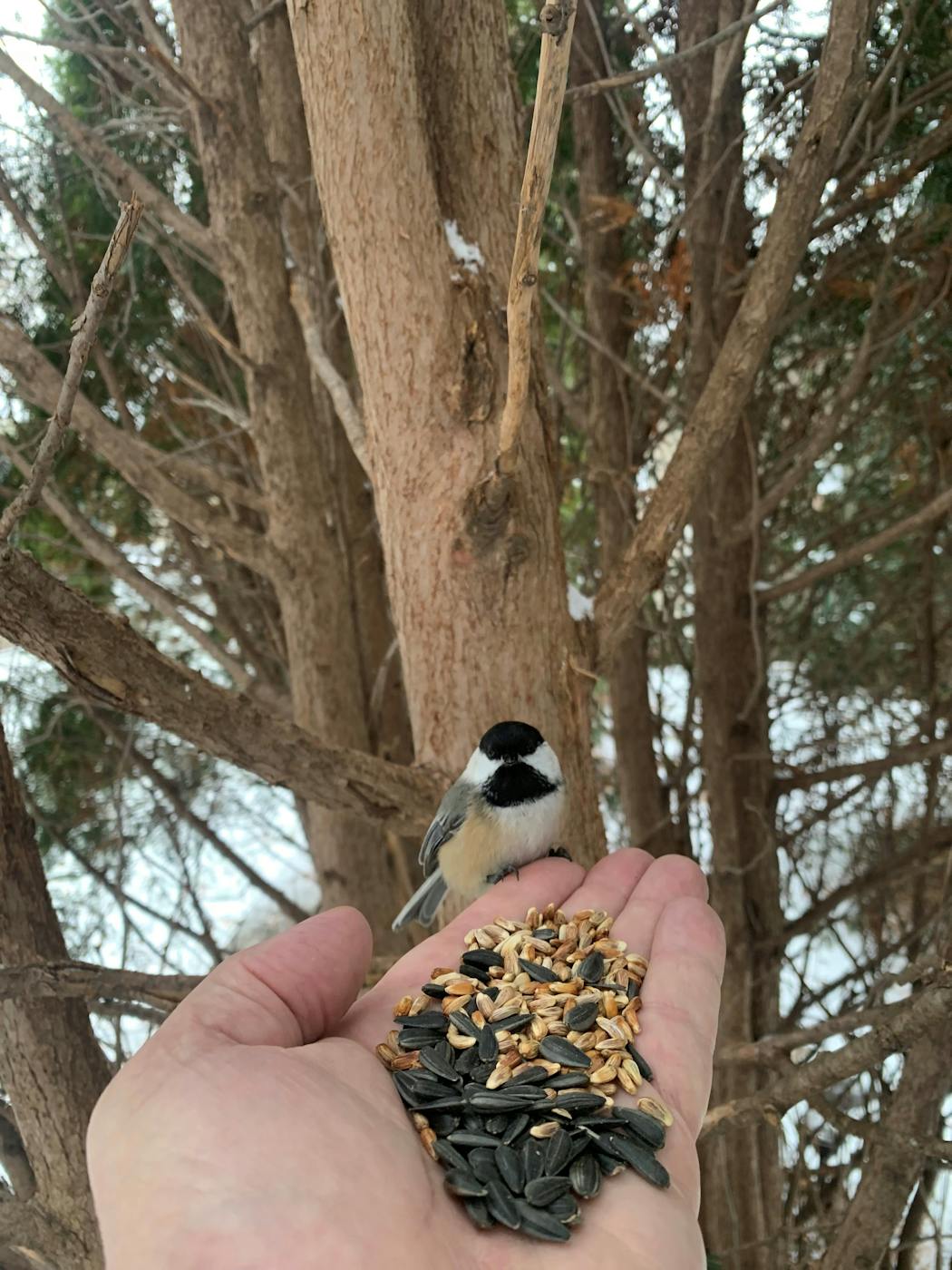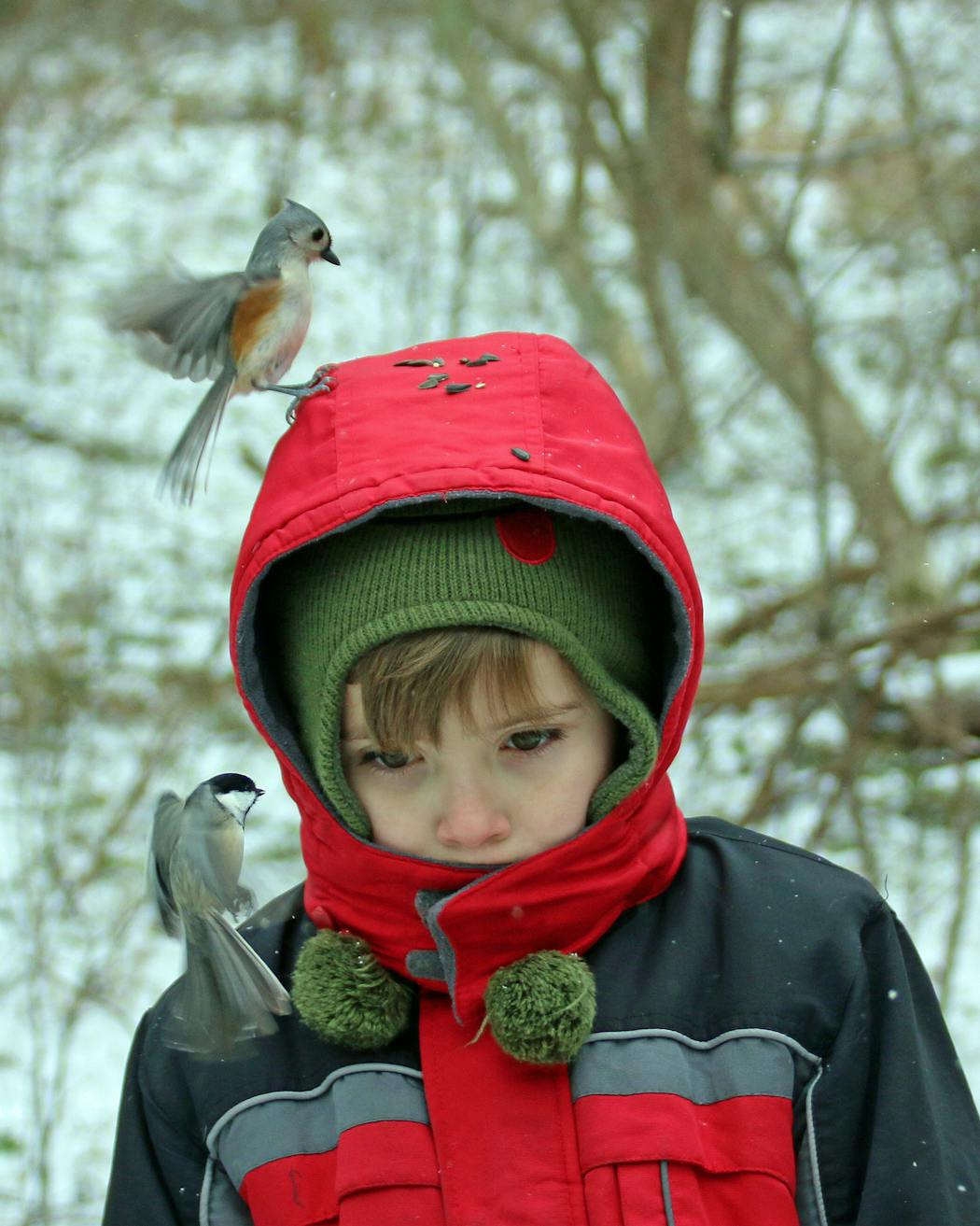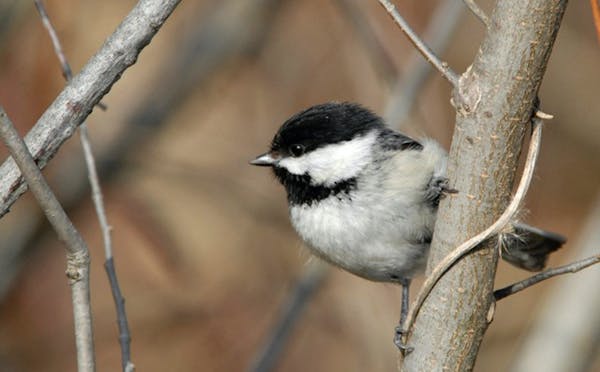Have you ever wondered what it would be like to literally have a wild bird in hand? Except for bird banders, few of us have ever had this experience — if we approach, birds fly off.
But it is possible to overcome some birds' natural wariness, and the bird at the front of the queue is the black-capped chickadee. These small birds have a venturesome spirit and loads of natural curiosity, and are almost always the first to try a new feeder or explore any change in the environment.
If you're willing to be patient, you can use their curious nature to train chickadees to feed out of your hand. (One quick caveat: I'm generally opposed to any handling of wildlife, but training wild songbirds to come to hand strikes me as a harmless activity. Please don't try this with sick or injured birds and do not hand-feed larger species that could become aggressive, such as Canada geese or wild turkeys.)
Some folks start by setting out a glove on a deck railing or chair near their feeders, dropping a handful of sunflower seeds onto it each day. Once chickadees are feeding this way, you can put the glove on, seeds in palm, and hold it out.
Others, like Janie Birr, skip this step and go right to sitting out by their feeders with sunflower seeds in hand. Try this for about 20 minutes at the same time each day, during periods when chickadees tend to come to your feeders.
That's what Jay Dobbs did, standing out in the cold with a handful of seeds, a half-hour at a time. On the second day the first tiny bird landed on his fingers. Once one 'dee breaks the ice, others will quickly follow.
What does it feel like? Some say the little birds are as light as a heavy snowflake, barely noticeable as they drop onto a finger.
Birr enjoys the birds' individual personalities as they approach her hand. "There'll be a picky one, poking through all the seeds, and cautious ones that hover but won't land, and assertive ones that come in so fast they almost crash-land."
Phyllis Terchanik took her great-nephews to a park where a naturalist had been hand-feeding birds for years. The boys were astonished when tufted titmice landed on their jacket parkas and chickadees fluttered in to grab a seed.
Other birds that might come in for hand feeding include nuthatches and goldfinches. This works at any time of year, not just winter. Kids, especially, love to try this harmless way to get close to nature.
St. Paul resident Val Cunningham, who volunteers with the St. Paul Audubon Society and writes about nature for local, regional and national newspapers and magazines, can be reached at valwrites@comcast.net.
Singing, ceremonies and straw hats: Olympics opening ceremony in Tahiti centers Polynesian culture

Three 101-year-old friends recall fond memories in 1940s Alexandria
Celine Dion makes musical comeback at Paris Olympics with Eiffel Tower serenade





